ADT 2011 Annual Report Download - page 79
Download and view the complete annual report
Please find page 79 of the 2011 ADT annual report below. You can navigate through the pages in the report by either clicking on the pages listed below, or by using the keyword search tool below to find specific information within the annual report.-
 1
1 -
 2
2 -
 3
3 -
 4
4 -
 5
5 -
 6
6 -
 7
7 -
 8
8 -
 9
9 -
 10
10 -
 11
11 -
 12
12 -
 13
13 -
 14
14 -
 15
15 -
 16
16 -
 17
17 -
 18
18 -
 19
19 -
 20
20 -
 21
21 -
 22
22 -
 23
23 -
 24
24 -
 25
25 -
 26
26 -
 27
27 -
 28
28 -
 29
29 -
 30
30 -
 31
31 -
 32
32 -
 33
33 -
 34
34 -
 35
35 -
 36
36 -
 37
37 -
 38
38 -
 39
39 -
 40
40 -
 41
41 -
 42
42 -
 43
43 -
 44
44 -
 45
45 -
 46
46 -
 47
47 -
 48
48 -
 49
49 -
 50
50 -
 51
51 -
 52
52 -
 53
53 -
 54
54 -
 55
55 -
 56
56 -
 57
57 -
 58
58 -
 59
59 -
 60
60 -
 61
61 -
 62
62 -
 63
63 -
 64
64 -
 65
65 -
 66
66 -
 67
67 -
 68
68 -
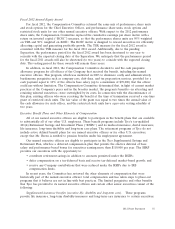 69
69 -
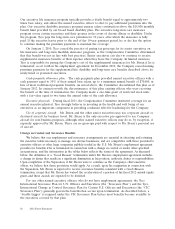 70
70 -
 71
71 -
 72
72 -
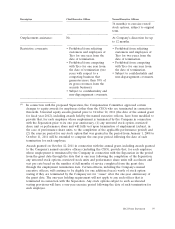 73
73 -
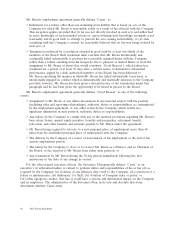 74
74 -
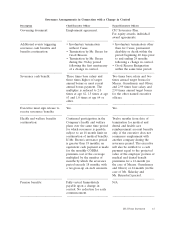 75
75 -
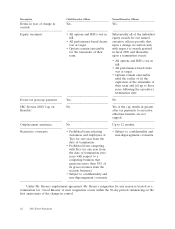 76
76 -
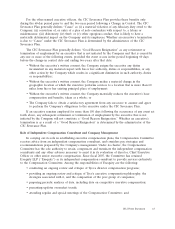 77
77 -
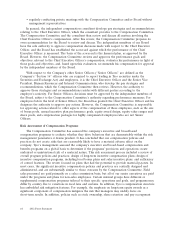 78
78 -
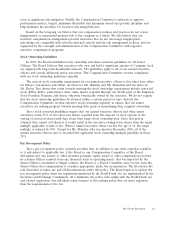 79
79 -
 80
80 -
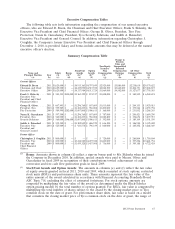 81
81 -
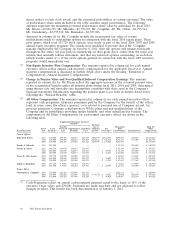 82
82 -
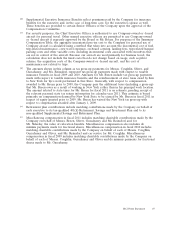 83
83 -
 84
84 -
 85
85 -
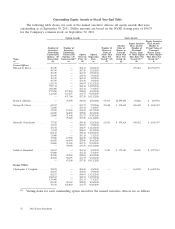 86
86 -
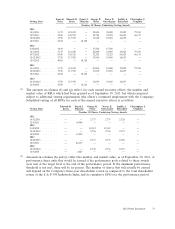 87
87 -
 88
88 -
 89
89 -
 90
90 -
 91
91 -
 92
92 -
 93
93 -
 94
94 -
 95
95 -
 96
96 -
 97
97 -
 98
98 -
 99
99 -
 100
100 -
 101
101 -
 102
102 -
 103
103 -
 104
104 -
 105
105 -
 106
106 -
 107
107 -
 108
108 -
 109
109 -
 110
110 -
 111
111 -
 112
112 -
 113
113 -
 114
114 -
 115
115 -
 116
116 -
 117
117 -
 118
118 -
 119
119 -
 120
120 -
 121
121 -
 122
122 -
 123
123 -
 124
124 -
 125
125 -
 126
126 -
 127
127 -
 128
128 -
 129
129 -
 130
130 -
 131
131 -
 132
132 -
 133
133 -
 134
134 -
 135
135 -
 136
136 -
 137
137 -
 138
138 -
 139
139 -
 140
140 -
 141
141 -
 142
142 -
 143
143 -
 144
144 -
 145
145 -
 146
146 -
 147
147 -
 148
148 -
 149
149 -
 150
150 -
 151
151 -
 152
152 -
 153
153 -
 154
154 -
 155
155 -
 156
156 -
 157
157 -
 158
158 -
 159
159 -
 160
160 -
 161
161 -
 162
162 -
 163
163 -
 164
164 -
 165
165 -
 166
166 -
 167
167 -
 168
168 -
 169
169 -
 170
170 -
 171
171 -
 172
172 -
 173
173 -
 174
174 -
 175
175 -
 176
176 -
 177
177 -
 178
178 -
 179
179 -
 180
180 -
 181
181 -
 182
182 -
 183
183 -
 184
184 -
 185
185 -
 186
186 -
 187
187 -
 188
188 -
 189
189 -
 190
190 -
 191
191 -
 192
192 -
 193
193 -
 194
194 -
 195
195 -
 196
196 -
 197
197 -
 198
198 -
 199
199 -
 200
200 -
 201
201 -
 202
202 -
 203
203 -
 204
204 -
 205
205 -
 206
206 -
 207
207 -
 208
208 -
 209
209 -
 210
210 -
 211
211 -
 212
212 -
 213
213 -
 214
214 -
 215
215 -
 216
216 -
 217
217 -
 218
218 -
 219
219 -
 220
220 -
 221
221 -
 222
222 -
 223
223 -
 224
224 -
 225
225 -
 226
226 -
 227
227 -
 228
228 -
 229
229 -
 230
230 -
 231
231 -
 232
232 -
 233
233 -
 234
234 -
 235
235 -
 236
236 -
 237
237 -
 238
238 -
 239
239 -
 240
240 -
 241
241 -
 242
242 -
 243
243 -
 244
244 -
 245
245 -
 246
246 -
 247
247 -
 248
248 -
 249
249 -
 250
250 -
 251
251 -
 252
252 -
 253
253 -
 254
254 -
 255
255 -
 256
256 -
 257
257 -
 258
258 -
 259
259 -
 260
260 -
 261
261 -
 262
262 -
 263
263 -
 264
264 -
 265
265 -
 266
266 -
 267
267 -
 268
268 -
 269
269 -
 270
270 -
 271
271 -
 272
272 -
 273
273 -
 274
274 -
 275
275 -
 276
276 -
 277
277 -
 278
278 -
 279
279 -
 280
280 -
 281
281 -
 282
282 -
 283
283 -
 284
284 -
 285
285 -
 286
286 -
 287
287 -
 288
288 -
 289
289 -
 290
290 -
 291
291 -
 292
292 -
 293
293 -
 294
294 -
 295
295 -
 296
296 -
 297
297 -
 298
298 -
 299
299 -
 300
300 -
 301
301 -
 302
302 -
 303
303 -
 304
304 -
 305
305 -
 306
306 -
 307
307 -
 308
308 -
 309
309 -
 310
310 -
 311
311 -
 312
312 -
 313
313
 |
 |
serve as significant risk mitigators. Finally, the Compensation Committee’s authority to approve
performance metrics, targets, minimum thresholds and maximum award caps provide discipline and
help eliminate the incentive for excessive risk-taking behavior.
Based on the foregoing, we believe that our compensation policies and practices do not create
inappropriate or unintended material risk to the company as a whole. We also believe that our
incentive compensation arrangements provide incentives that do not encourage inappropriate
risk-taking; are compatible with effective internal controls and the risk management policies; and are
supported by the oversight and administration of the Compensation Committee with regard to
executive compensation programs.
Stock Ownership Guidelines
In 2003, the Board established stock ownership and share retention guidelines for all Senior
Officers. The Board believes that executives who own and hold a significant amount of Company stock
are aligned with long-term shareholder interests. The guidelines apply to all of our named executive
officers and certain additional senior executives. The Compensation Committee reviews compliance
with our stock ownership guidelines annually.
The current stock ownership requirement for our named executive officers is five times base salary
for Messrs. Gursahaney and Oliver, six times for Mr. Sklarsky and Ms. Reinsdorf and ten times for
Mr. Breen. Tyco shares that count towards meeting the stock ownership requirement include restricted
stock, RSUs, DSUs, performance share units, shares acquired through our 401(k) plan or the Employee
Stock Purchase Program, and shares otherwise beneficially owned by the executive. We do not require
that the stock ownership guidelines be attained within a certain period of time. Instead, the
Compensation Committee reviews executive stock ownership regularly to ensure that our senior
executives are making progress towards meeting their goals or maintaining their requisite ownership.
Tyco’s stock retention guidelines require that our named executive officers and other senior
executives retain 75% of net (after-tax) shares acquired from the exercise of stock options or the
vesting of restricted shares until they attain their target stock ownership goal. Once that goal is
attained, they cannot sell shares if it would result in the executive owning fewer shares than the target
multiple applicable to him or her. When a named executive officer reaches the age of 62, the target
multiple is reduced by 50%. Except for Mr. Sklarsky, who was hired in December 2010, all of the
named executive officers met or exceeded the applicable stock ownership multiple guideline in fiscal
2011.
Pay Recoupment Policy
Tyco’s pay recoupment policy currently provides that, in addition to any other remedies available
to it and subject to applicable law, if the Board or any Compensation Committee of the Board
determines that any annual or other incentive payment, equity award or other compensation received
by a Senior Officer resulted from any financial result or operating metric that was impacted by the
Senior Officer’s fraudulent or illegal conduct, the Board or a Board Committee may recover from the
Senior Officer that compensation it considers appropriate under the circumstances. The Board has the
sole discretion to make any and all determinations under this policy. The Board expects to update the
pay recoupment policy when the regulations mandated by the Dodd-Frank Act are implemented by the
Securities and Exchange Commission. At a minimum, the policy will comply with the Dodd-Frank Act
and related regulations, but will likely retain features of the existing policy that are more expansive
than the requirements of the Act.
2012 Proxy Statement 65
